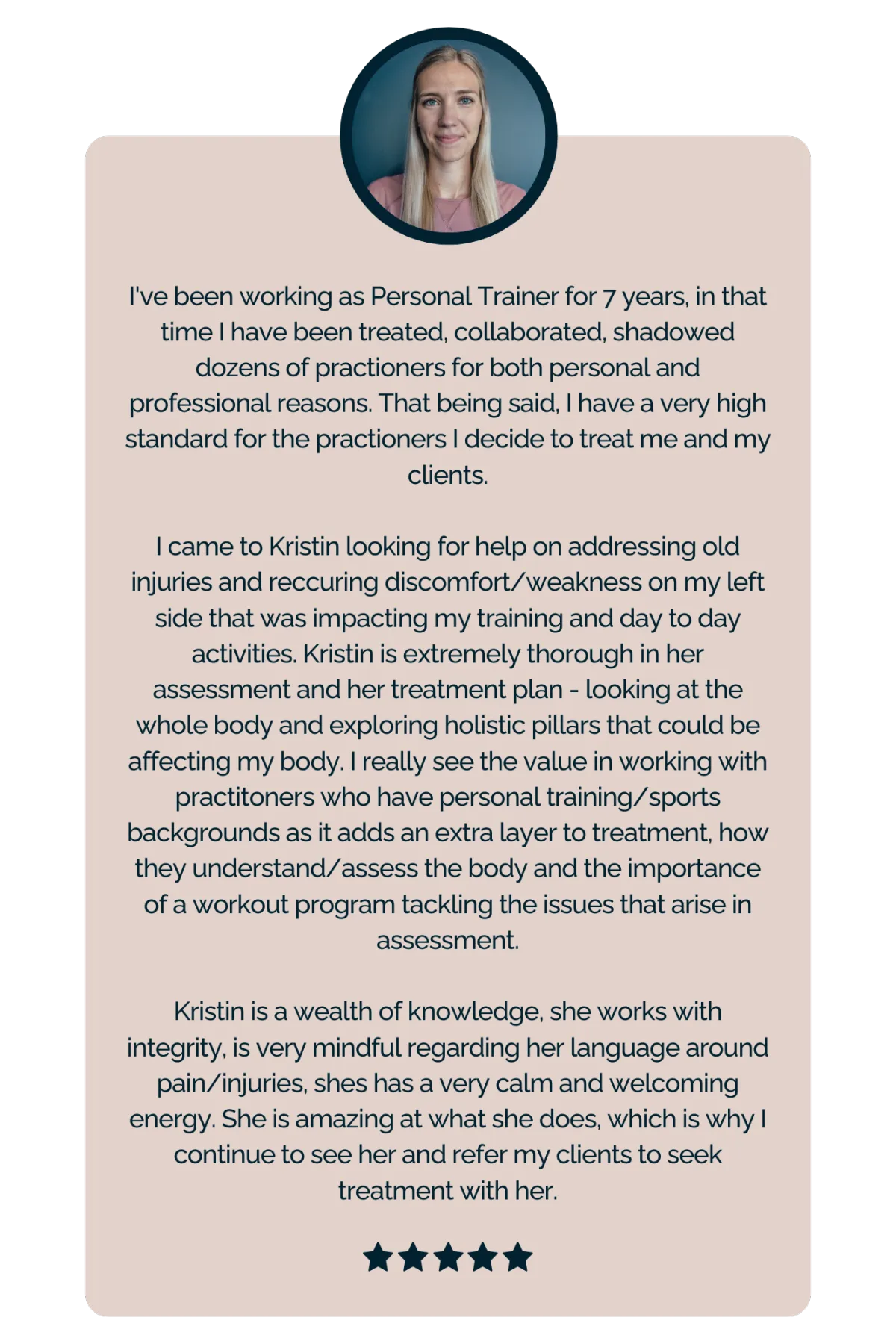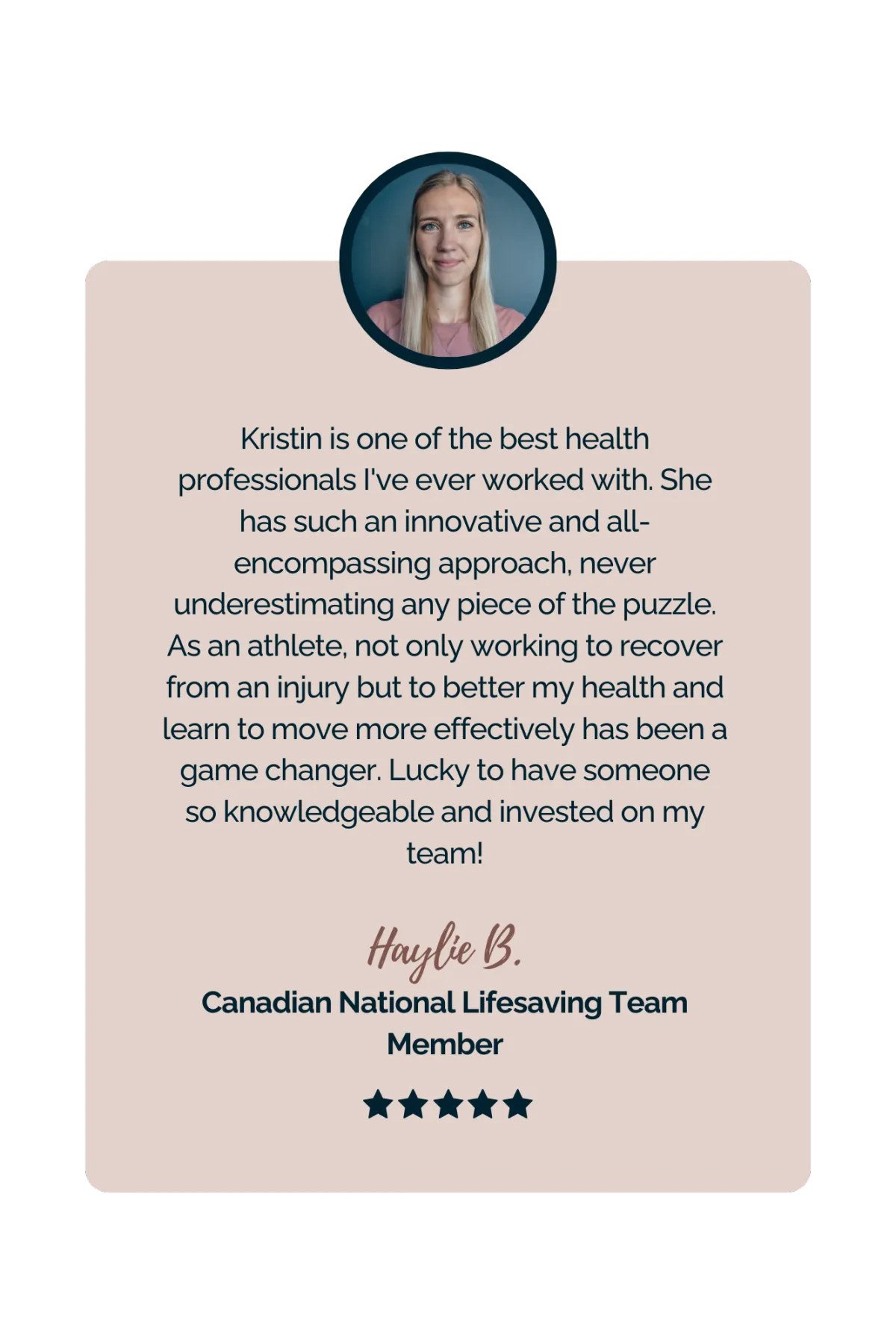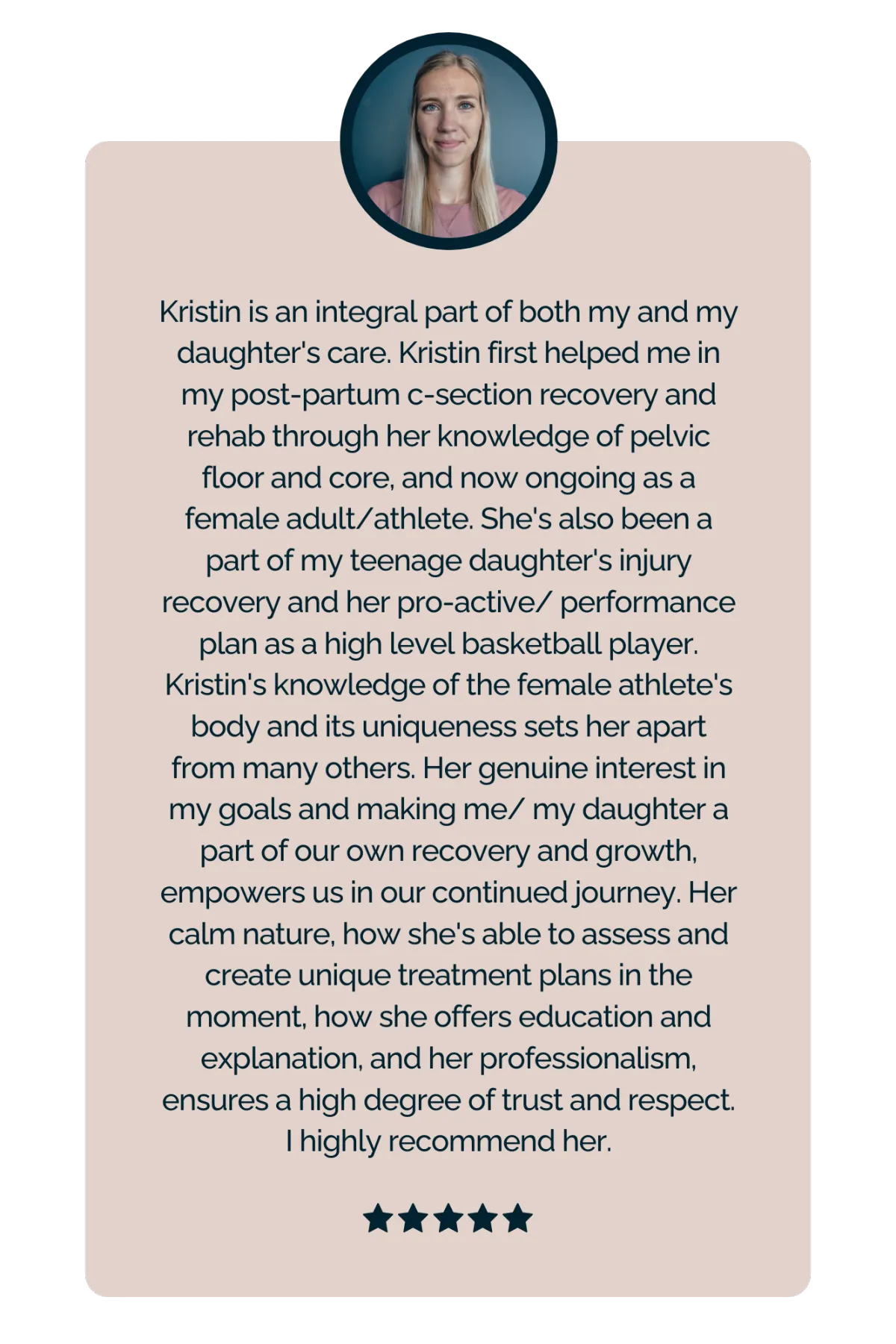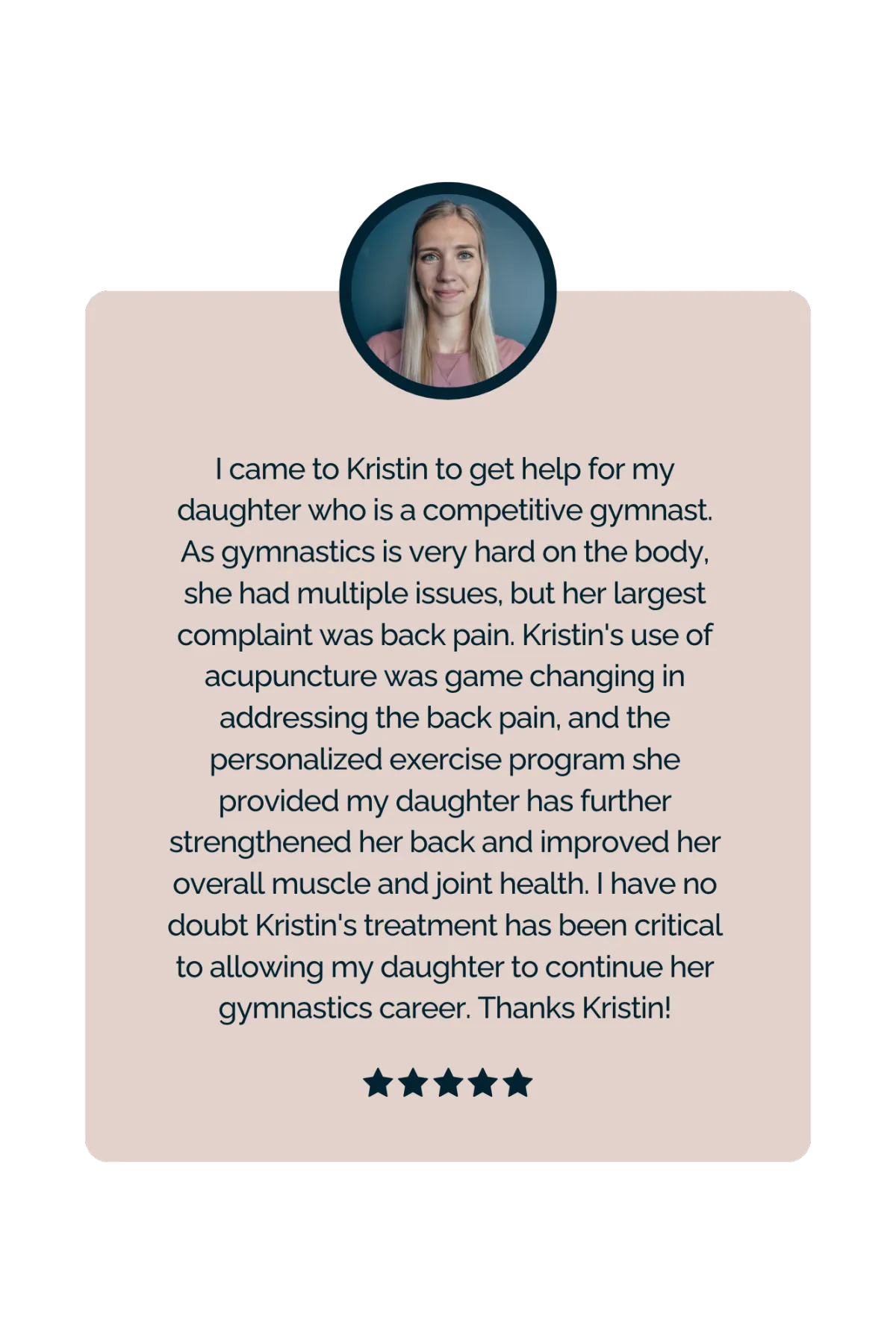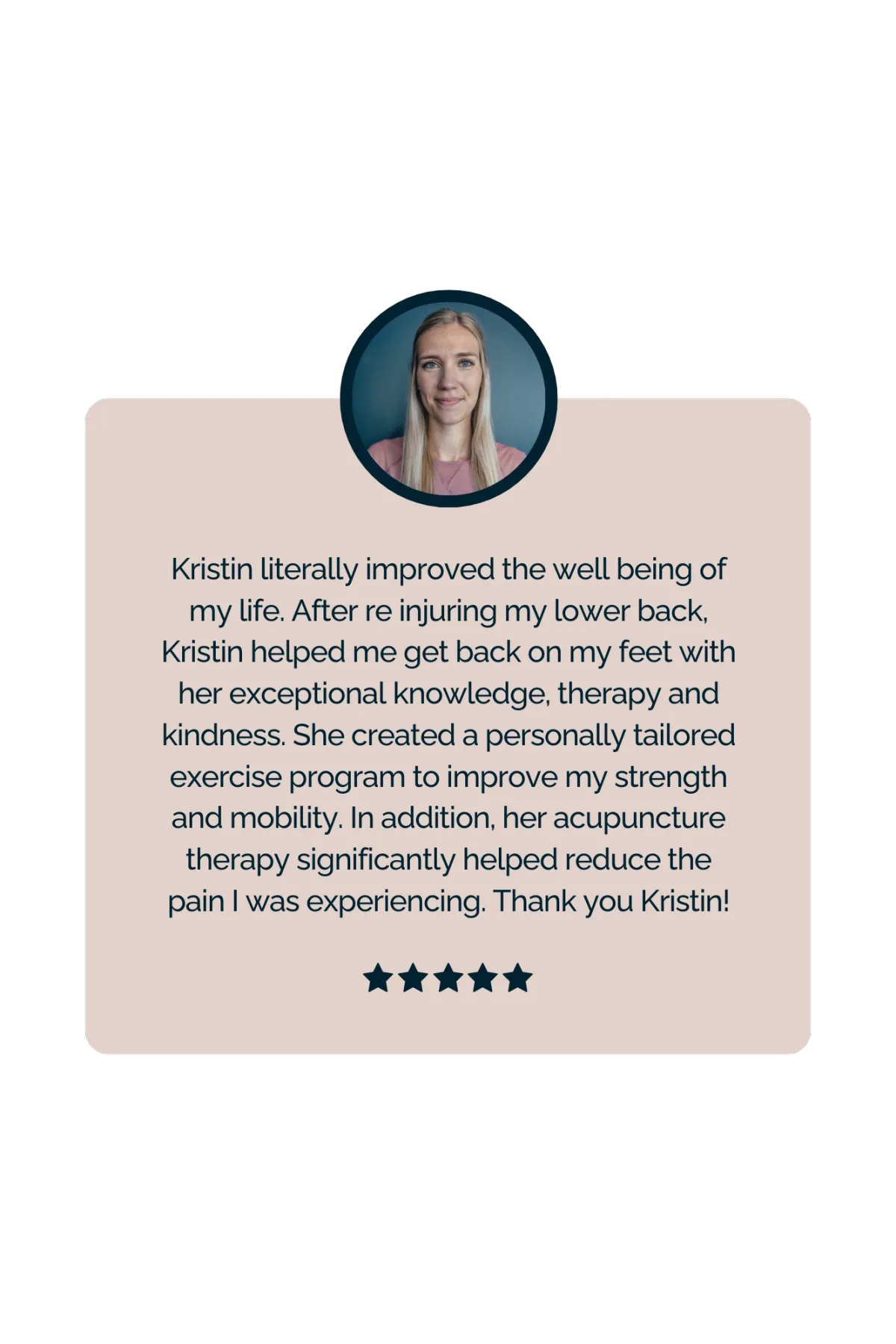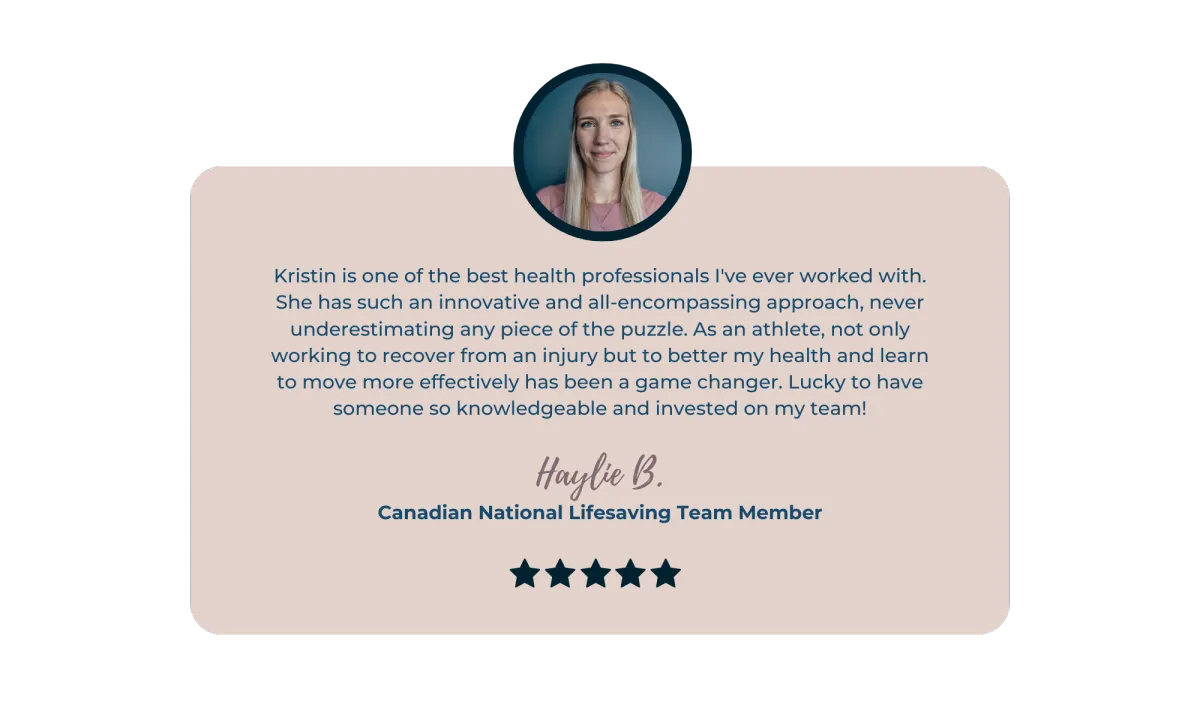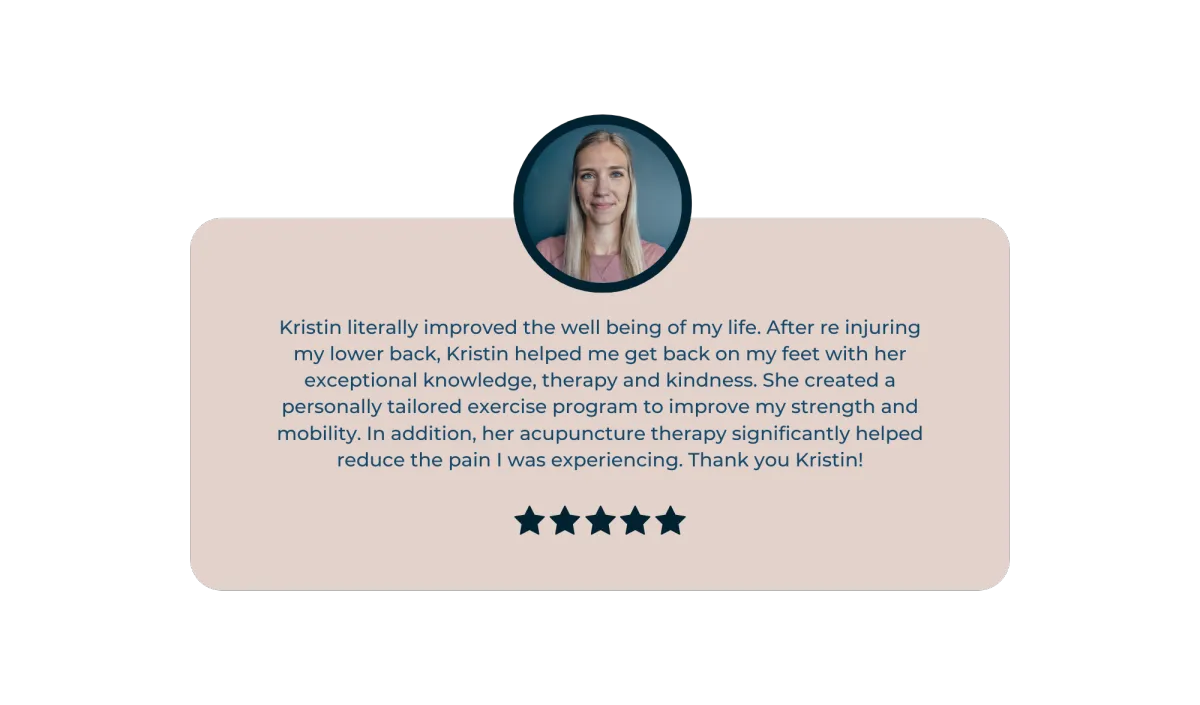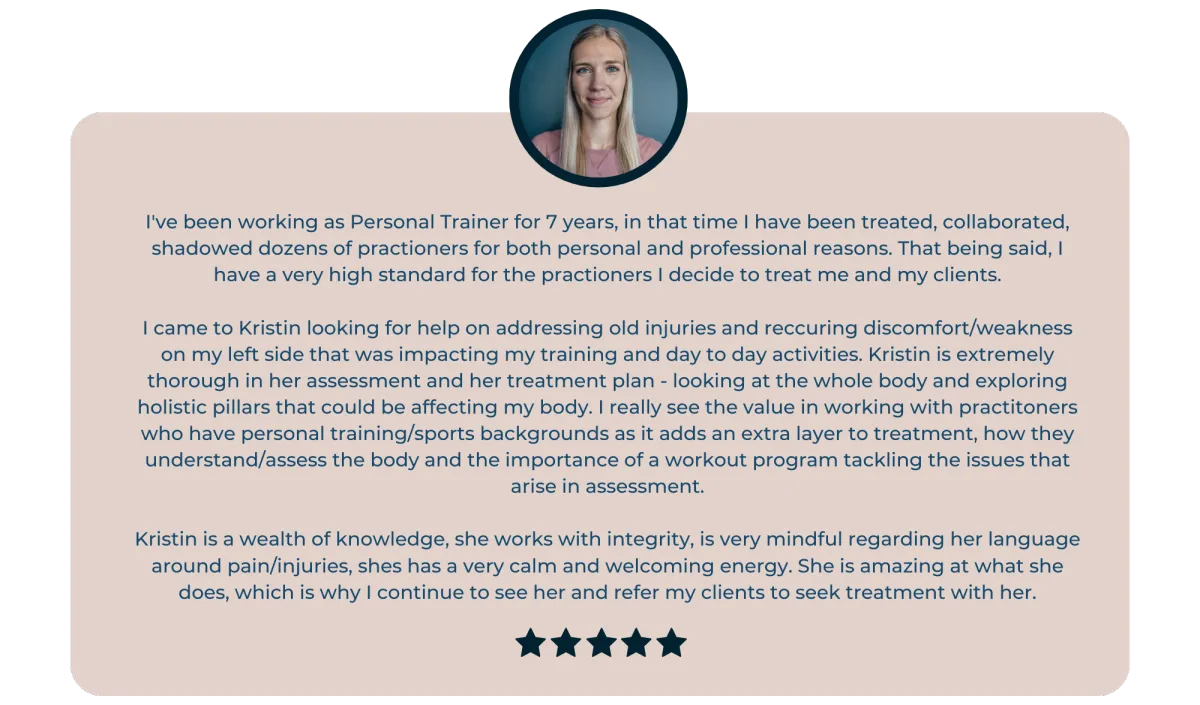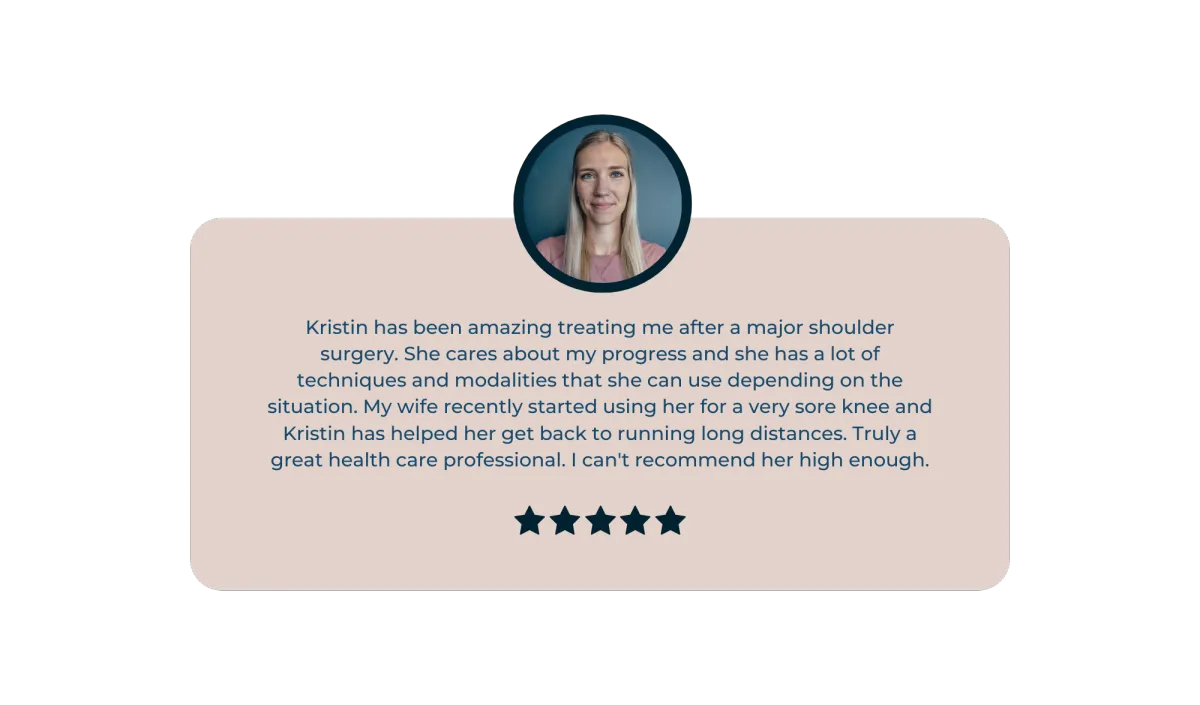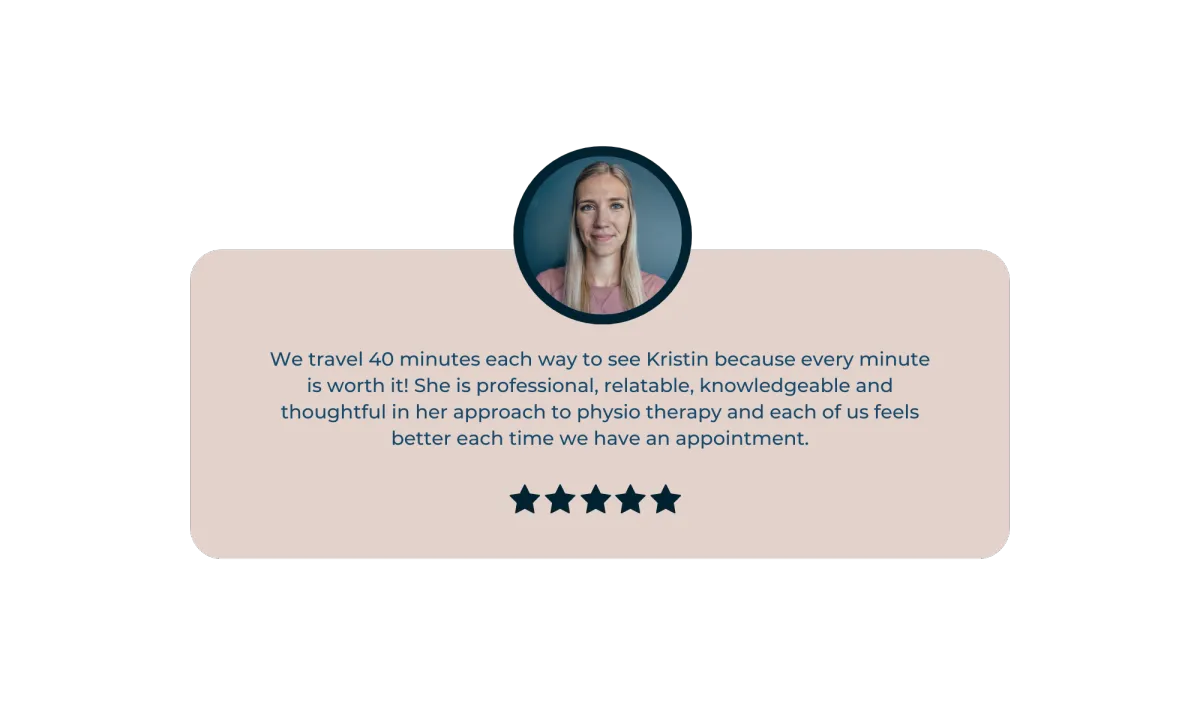HEY THERE.
Thanks for stopping by! My name is Kristin and I am a Registered Physical Therapist and The Founder of East Mill Physio. I help athletes feeling frustrated by their bodies, learn to train smarter, so they can continue doing what they love, and set the stage for lifelong success in their health and sport. I have a special interest in working with teen girls, especially volleyball athletes! I also love complicated cases and providing proactive Performance Care for active adults!
THE BEGINNING.
As a young athlete, I grew up playing a variety of sports. By the time I hit my teenage years, I was my dance studio’s tallest ballerina en pointe, and had dabbled in most sports – but none of these sports came close to grabbing hold of my heart like volleyball did.
I had been cut from my (very small) school’s team in grade 8, and yet, was serendipitously struck with the courage to try out for the (much larger) high-school team when I got to grade 9.
I was thrilled to be offered a position on the team, and I showed up at that first practice, ready to work hard and become the best teammate I could be.
And my tall, gangly teen self, immediately felt like I had finally found my place, and my people. I was elated.
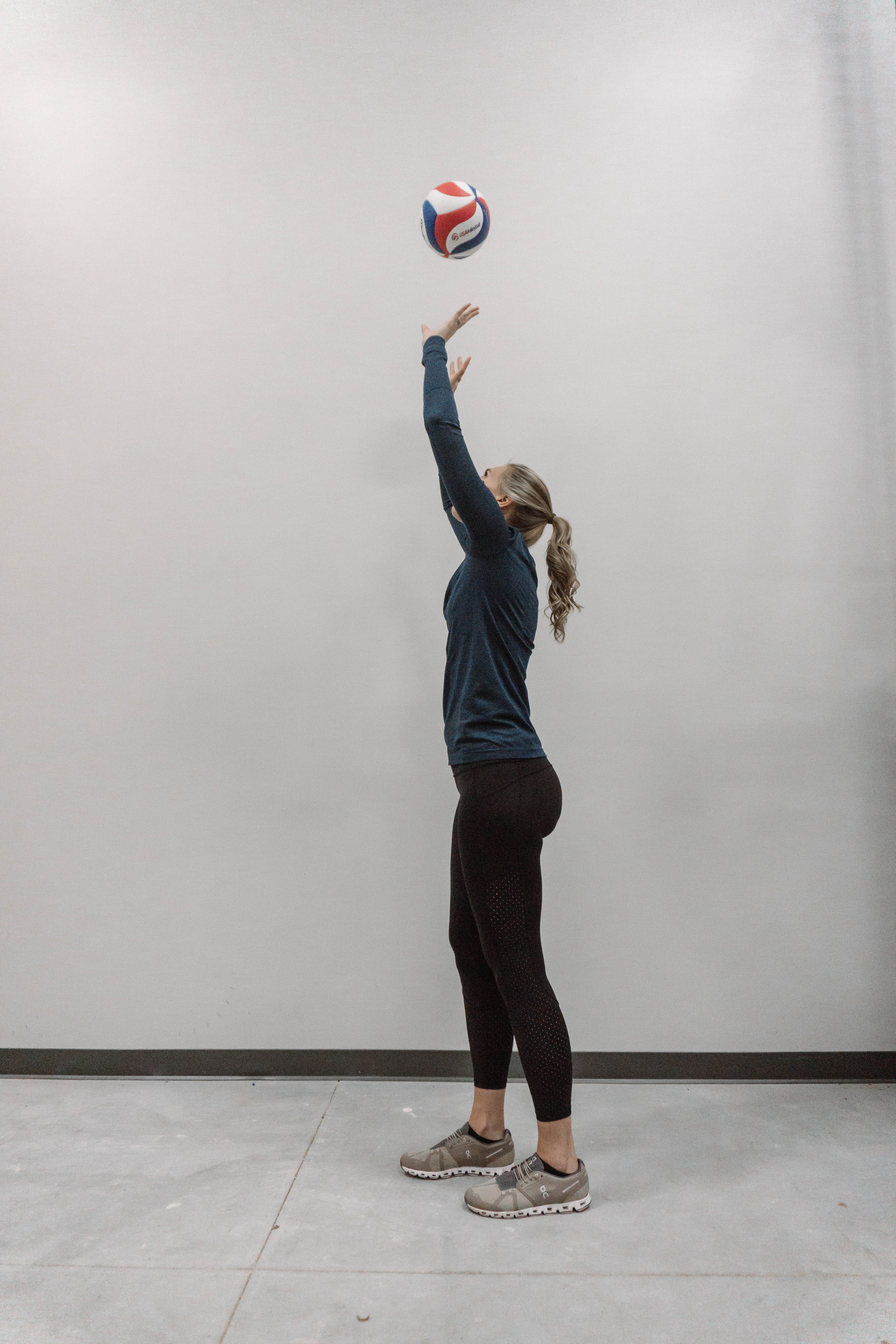
As a young athlete, I grew up playing a variety of sports. By the time I hit my teenage years, I was my dance studio’s tallest ballerina en pointe, and had dabbled in most sports – but none of these sports came close to grabbing hold of my heart like volleyball did.
I had been cut from my (very small) school’s team in grade 8, and yet, was serendipitously struck with the courage to try out for the (much larger) high-school team when I got to grade 9.
I was thrilled to be offered a position on the team, and I showed up at that first practice, ready to work hard and become the best teammate I could be.
And my tall, gangly teen self, immediately felt like I had finally found my place, and my people. I was elated.
So I continued doing the thing that had gotten me to this point in my playing career – I dug deep and pushed even harder.
I did all I could to manage the pain and finish out the remainder of our season.
Somehow I did it, but I was completely exhausted – mentally and physically.
You probably wouldn’t have been able to tell by looking at me, but I was struggling.
I continued to put up good numbers, while staying at the top of my classes, but with each trip to the training room, I had a growing sense of frustration with my body.
I was starting to worry that my body wouldn’t ever feel good again and I became resentful of the sport that I had once fallen in love with.
WORKING HARDER.
So I continued doing the thing that had gotten me to this point in my playing career – I dug deep and pushed even harder.
I did all I could to manage the pain and finish out the remainder of our season.
Somehow I did it, but I was completely exhausted – mentally and physically.
You probably wouldn’t have been able to tell by looking at me, but I was struggling.
I continued to put up good numbers, while staying at the top of my classes, but with each trip to the training room, I had a growing sense of frustration with my body.
I was starting to worry that my body wouldn’t ever feel good again and I became resentful of the sport that I had once fallen in love with.
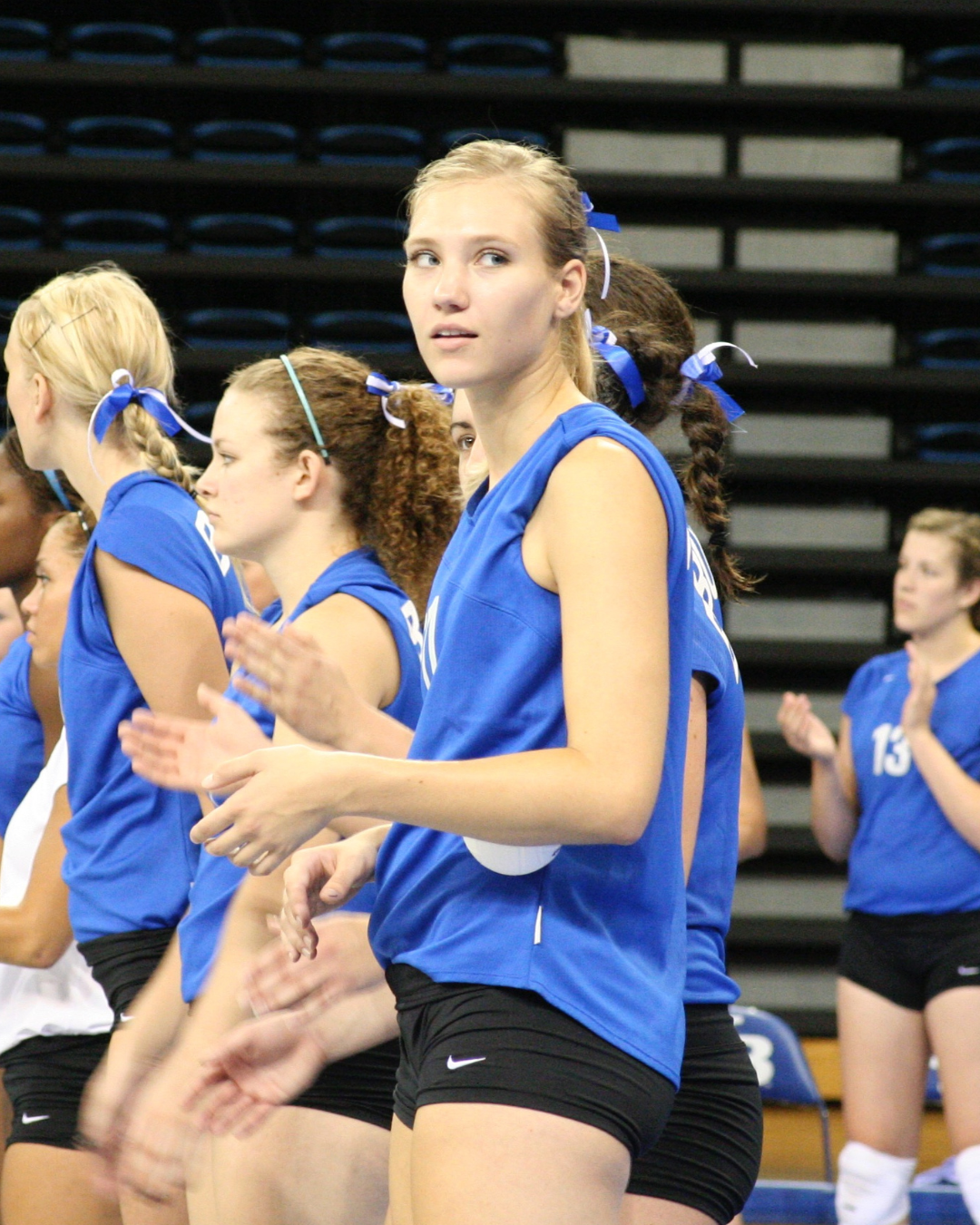
LIFE IN BUFFALO.
By the time I entered my sophomore year, I felt like I was finally starting to find my groove.
I made all 4 of the all-tournament teams that pre-season, I was setting school records, and was being recognized at the conference and national level.
But, at the same time as my performance was peaking, my body was slowly starting to complain and the harder I worked, the more things started to add up.
I started experiencing new aches
I had shoulder pain and back pain
I was slower and felt like I was losing power
I had weekly migraines and wasn’t getting my period
I would black out if I ran too hard during sprints or pushed myself too hard in a hitting drill
I ended up with shin pain. The trainers hinted at a stress fracture but, being fully immersed in the culture, I didn’t push for any testing that might possibly keep me from playing – instead, I opted for a crafty tape job and ice massages so that I could keep the momentum going.
I became a regular customer in the training room, never missing my pre-game AT and Advil.
This was all pretty par for the course amongst my teammates. We each had an injury (or several) and I think we all believed that our injuries were part of the price you pay for playing sports.
My attempts to meet each new challenge by working harder were starting to fail, and it seemed that the harder I worked, the more things were starting to fall apart and the more frustrated I became.
I had no choice but to become an expert at finding creative ways to compensate for my aching body.
But … as one of my mentors says “every compensation has an expiry date” and mine came on November 5th, 2010.
THE TURNING POINT.
I woke up early that morning and very quickly knew that something wasn’t right.
As I tried to roll over I had a shooting pain down the back of my left leg.
What felt like a stubbornly tight hamstring in the weeks prior suddenly had me feeling like someone had a taser aimed at the back of my leg.
I spent the next couple of weeks jumping around from practitioner to practitioner, hopefully looking for some help. I saw the varsity doc, head AT, team trainer and set up a time to meet with my coaches, hoping for some support.
Instead I:
Was told there was nothing wrong with me.
Was told I didn’t have a bad back like my teammate.
Was given a list of stretches that were too painful to complete.
Was rolled and stretched out to the point of tears before games.
Was told that I needed to find a way to play.
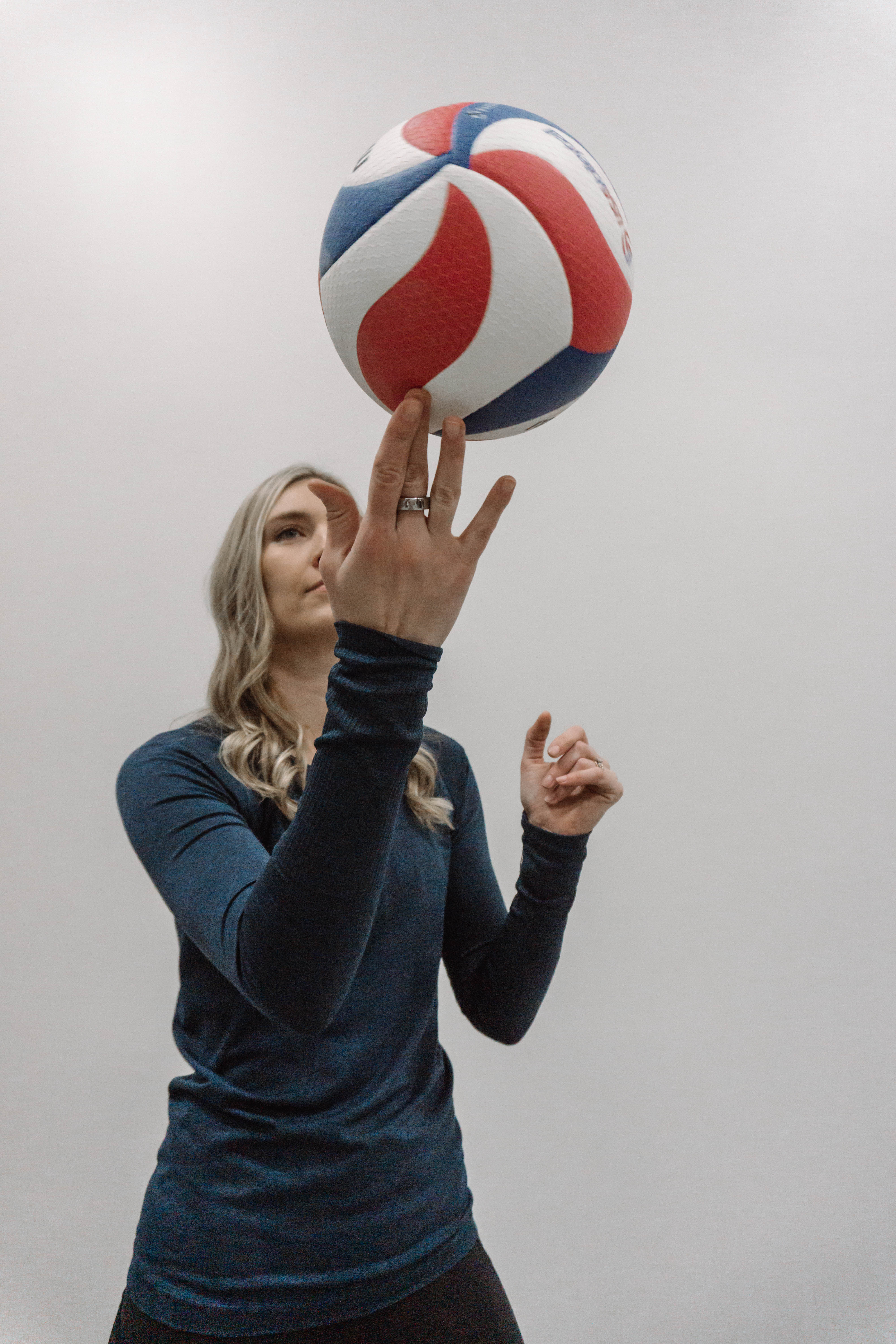
BECOMING A COUCH POTATO.
So I continued doing the thing that had gotten me to this point in my playing career – I dug deep and pushed even harder.
I did all I could to manage the pain and finish out the remainder of our season.
Somehow I did it, but I was completely exhausted – mentally and physically.
You probably wouldn’t have been able to tell by looking at me, but I was struggling.
I continued to put up good numbers, while staying at the top of my classes, but with each trip to the training room, I had a growing sense of frustration with my body.
I was starting to worry that my body wouldn’t ever feel good again and I became resentful of the sport that I had once fallen in love with.
WORKING HARDER.
So I continued doing the thing that had gotten me to this point in my playing career – I dug deep and pushed even harder.
I did all I could to manage the pain and finish out the remainder of our season.
Somehow I did it, but I was completely exhausted – mentally and physically.
You probably wouldn’t have been able to tell by looking at me, but I was struggling.
I continued to put up good numbers, while staying at the top of my classes, but with each trip to the training room, I had a growing sense of frustration with my body.
I was starting to worry that my body wouldn’t ever feel good again and I became resentful of the sport that I had once fallen in love with.
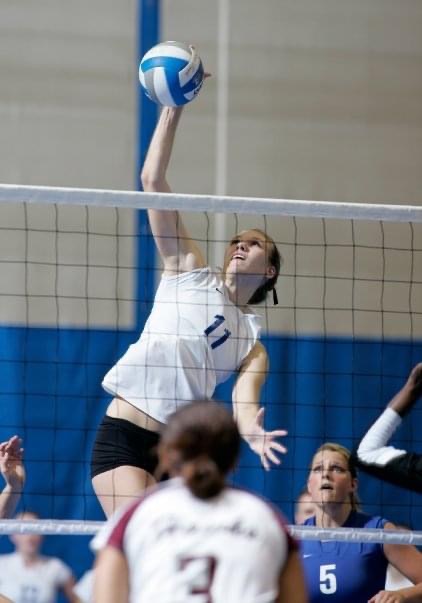
I remember lying on the couch one day. I had plans to go with my closest friends to a show in Toronto. I had been looking forward to it for months. I would get to spend time with my closest friends, doing something fun.
As I hobbled from the couch to the kitchen to grab a glass of water, it hit me — there was no way I would be able to manage going to this show. The drive, the standing, there was no way it would be possible for me to go.
I shuffled back to the couch and as I tried to perfect a text to my friend, letting them know the bad news, my eyes started to sting as I thought about the fact that I would be missing out on spending time with my friends, who I had missed so badly.
The truth is, most injuries don’t happen overnight and sports are designed to motivate athletes to keep playing at the expense of listening to their bodies and it is 100% possible for you to be pain-free doing the things you love, now and for the rest of your life, despite your list of injuries and aging body.
I laid there in a fit of self-pity, and all these thoughts started rushing through my head:
Why can’t I even stand
What is wrong with me
How am I possibly going to be able to play volleyball in one week
My coaches are going to be so upset with me when they see me
On the one hand, I was frustrated that I couldn’t stand for one minute but, for some crazy reason, was still expecting myself to push through the pain to play when I got back to school.
With all of these thoughts, feeling like I was letting my friends down, and missing out on doing the things that I loved and missed. I was crushed.
I broke down sobbing, feeling so lonely and inadequate.
And yet, in that moment, hope set in and I felt more eager than ever to make a change. I knew that I needed to do more for myself. I couldn’t live this way. I was going to find answers. I was going to do what felt good for my body and I was going to get the support that I needed. I needed to be smarter.
When I got back to school, things moved quickly. In the span of 2 months,
I was able to see a doc who sent me for more testing
I had an MRI
I was referred to a back surgeon
I was driven by our trainer to the hospital for a cortisone injection
I had back surgery for a herniated disc and returned to class three days later
THE FALLOUT.
I was thankfully able to return to playing 6 months later, just in time for pre-season training my junior year, but as I finished out my last 2 years of playing, things never quite felt right.
Worst of all, I lost a lot of trust and confidence:
In my body
In my ability to make decisions
In my trainers/coaches
In my rehab program
And in my sport in general
When I finished out my time at Buffalo I decided that it was best for my body to retire from volleyball.
I turned down offers to play at the national level and packed away my shoes and knee pads for the next 5 years. I wasn't emotionally ready to give up my sport, but I felt like I had no other choice.
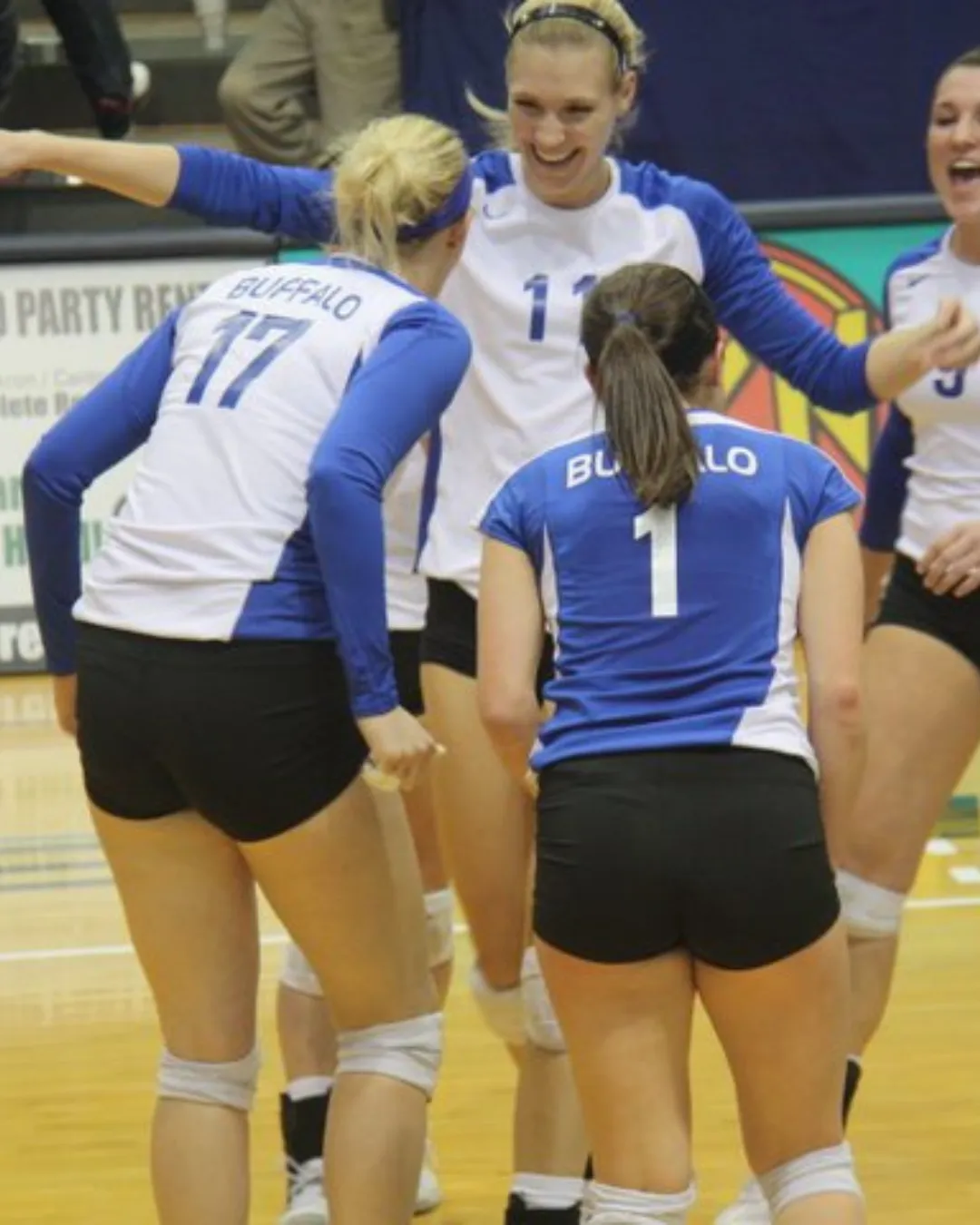
THE LESSON.
But the scariest part is that my story is not unique.
I was one of 3 girls on my team to have back surgery and I have heard many parts of this story told by the teen girls that I have worked with.
It wasn’t until I became a physio and started working with a lot of teen athletes that the full story started to come together.
As I reflected on my own experiences, I realized that there were so many missed signs and opportunities for me as I was growing and going through sport.
Like:
Changes in your period mirror changes in your health
Peeing yourself (even a little) in the middle of a tough hitting drill (or as you laugh in the car after a long tournament) is a sign that your core isn’t functioning optimally and that doesn’t bode well for injury
Stress fractures, illness and overuse injuries are a serious sign of overtraining and/or under-fuelling
Training exactly like the boys football team is likely not going to get you the results you want in your sport

THE EMP MISSION.
That’s why I started EMP – because your inner athlete deserves to be fully supported and have all of the knowledge and support he/she needs to establish complete trust.
As an athlete, you were likely led to believe that working harder is what led you to all of your achievements, and chances are, you were rewarded for your perseverance with praise, medals and ribbons.
But your younger days as an athlete also led you to believe that pain and injury are the price you have to pay for being active and getting older – and so you continue to push through the pain, secretly wondering when the day will come that you will have to stop doing the things that bring you the most joy – beach in the summer, women’s league in the winter and peloton rides to fill in the gaps.
The truth is, most injuries don’t happen overnight and sports are designed to motivate athletes to keep playing at the expense of listening to their bodies and it is 100% possible for you to be pain-free doing the things you love, now and for the rest of your life, despite your list of injuries and aging body.
HERE FOR YOU.
I help active individuals feeling concerned about their aging bodies learn to develop trust in themselves so that they can play without pain and continue doing the things they love – now and for the rest of their lives.
READY TO CHAT?
I am so happy you are here and I look forward to working with you!
STAY CONNECTED.
I 100% respect your privacy. Please feel free to unsubscribe at anytime!
SUPPORT
LEARN
CONNECTION. EMPOWERMENT. FREEDOM.
© 2025 by East Mill Physio. Designed by Manifest Digital Creation
